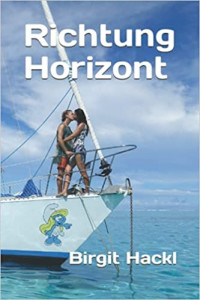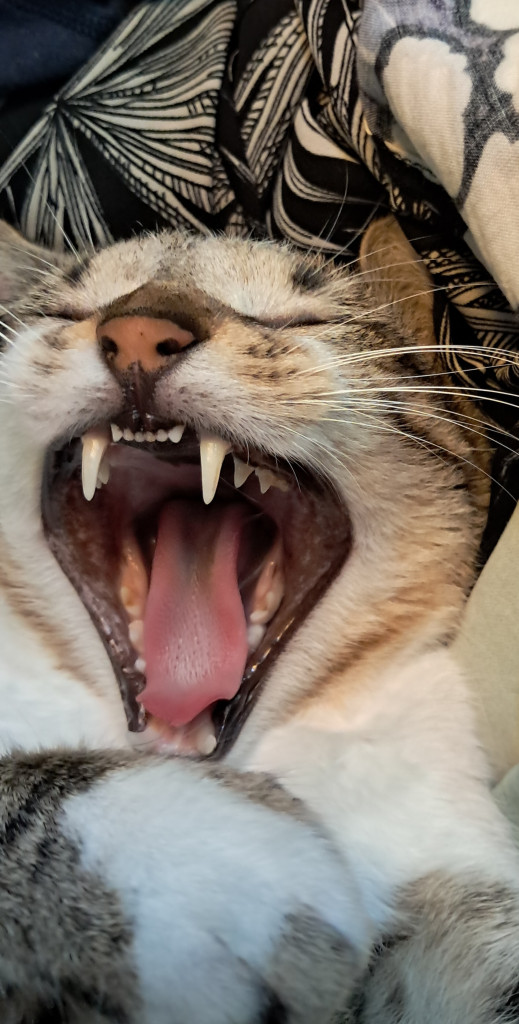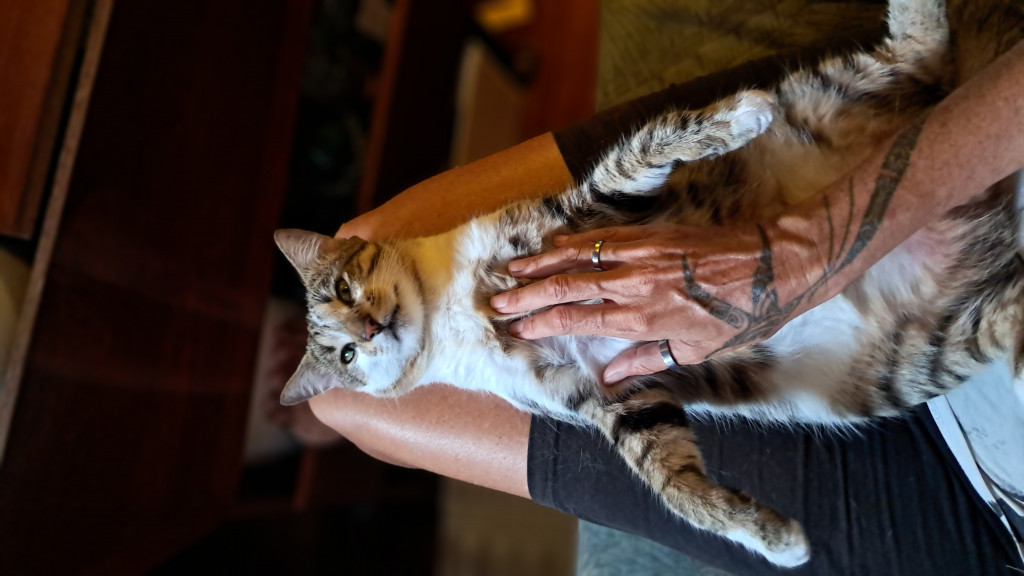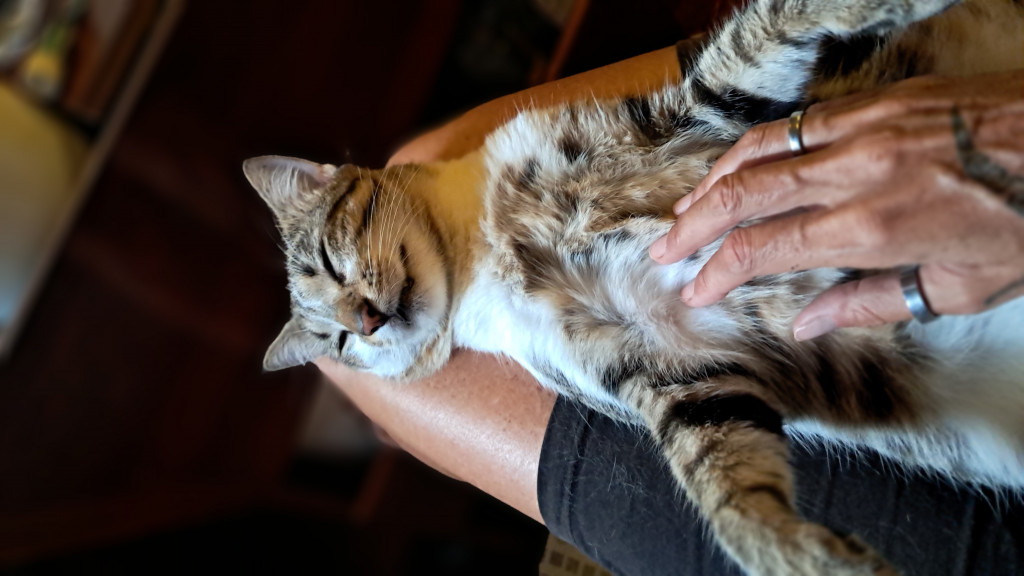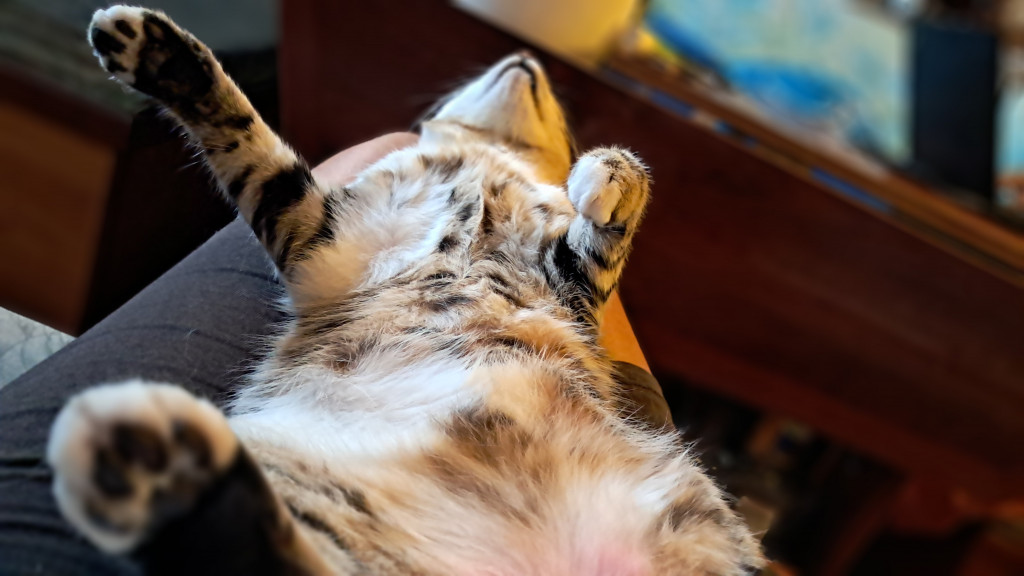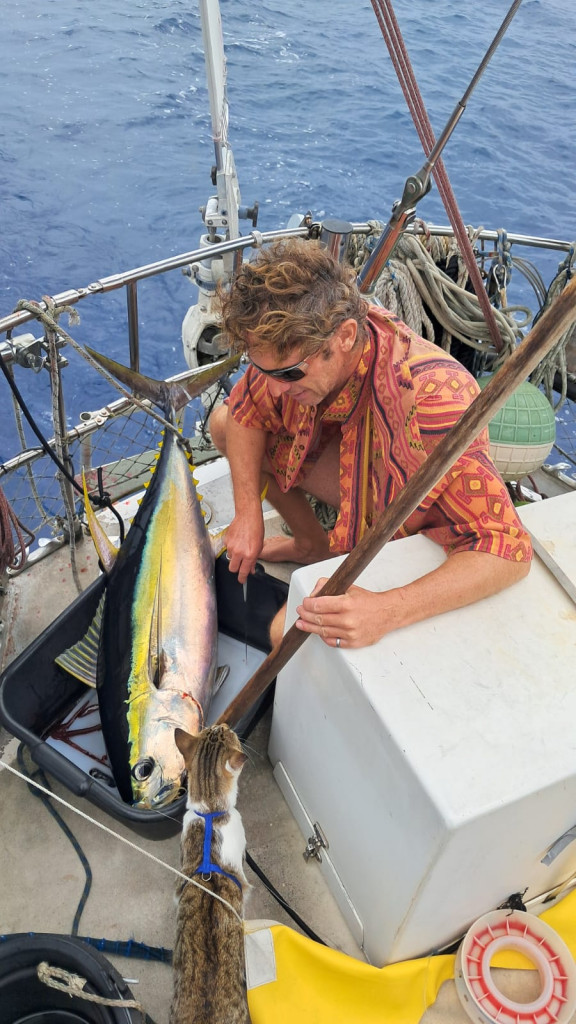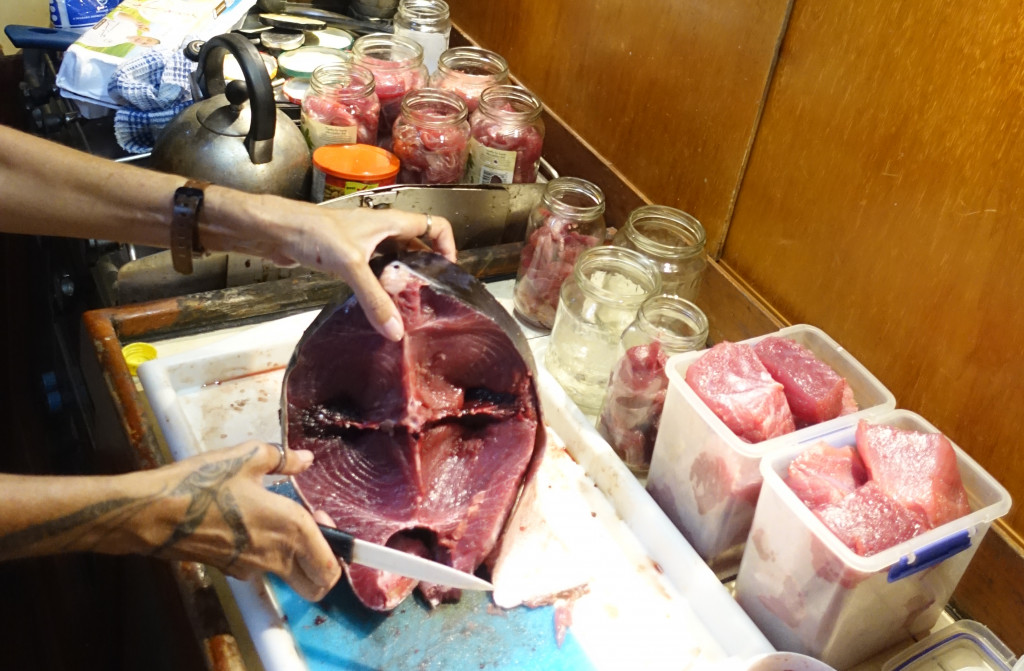Turtles are still hunted and eaten on most islands in the Pacific, the only exceptions are touristy places (where the locals are encouraged to protect them as an attraction for visitors) and around very developed areas, where environmental organisations have been raising awareness for the protection of endangered species. We try the same and often include turtles in the presentations we do at schools, explaining their role in the eco-system and how so many die in the nets of big fishing fleets and due to plastic pollution that it’s no longer sustainable for islanders to hunt them like its their tradition… The only places where we’ve met lots of turtles that are not even afraid of humans, has been in very remote, uninhabited places and around islands with strict seventh day adventist churches (as their religion prohibits the consumption of marine animals without scales…).
In Kapingamarangi we see even less turtles when going snorkeling than on the atolls of PNG, where we’ve just come from–only one small specimen so far. Yesterday, our friend Twinson, the policeman, came by with his boat after a fishing trip to offer us some tuna. I was horrified to see a small turtle lying on its back among the fish the three men had caught. I asked if the poor thing was still alive (yes, yes) and tried to explain that it was still very small, too small to be caught, but they just laughed and said it was good meat. So I asked if I could buy it from them, but Twinson refused with a smile, no money needed, I could have it for free. Again I tried to explain that we see so few turtles anymore and that it would be really good to protect them now to still have some for the future, but I don’t think they understood or agreed. Twinson gestured to the boy at the bow, who grabbed the turtle at its flipper and hauled it over the side. I was worried that it was too hurt or weak to swim (it had looked dead in the boat), but the little creature set off like shot from a cannon and was gone from sight within a second.
I hope it has learned its lesson, will give humans a wide berth from now on, and will grow to be a huge, wise, old turtle.
I didn’t take pictures yesterday, but here’s an unafraid specimen we met in the Line Islands ![]()

2025
21
Nov
I saved a turtle’s life
2025
17
Nov
Kapingamarangi, our first stop in Micronesia!
Kapingamarangi–a ringing name that embodies the ideal of remote, pristine Pacific islands for many cruisers. We had already dreamed of coming here, before we even set out cruising–inspired by beautiful photos we had seen at one of the presentations of the “Seenomaden” (a cruising couple who’s famous in Austria).
Last week we arrived here after a bouncy 3 day trip up from the remote islands of Bougainville–and were a bit amused to find the village with its 150 people (about 500 more live in the capital Pohnpei or abroad) more developed and connected with the world than the atolls we had visited before in Papua New Guinea, with a supply ship that calls every 2 months or so, watertanks and solar arrays, a medical centre with a visiting doctor and even a starlink antenna!
We got a very friendly welcome from chief Solomon, who inspected our papers and the cruising permit (you have to apply online in advance from the Federated States of Micronesia), then the police officer Twinson showed us around the two village islands (connected by a bridge) where the people still live in traditional houses. He also gave us a breadfruit, an important part of the village’s staple food: big breadfruit trees grow everywhere next to flooded fields of taro. These starchy sources of carbs together with bananas, papayas, coconuts and of course fish are the traditional diet here. We weren’t lucky fishing on the way here, but friendly fishermen keep dropping off tuna, jacks and rainbow runners they caught out in the pass. Wonderful Polynesian hospitality as we have enjoyed it all over the Pacific ![]()
The village islands are densely populated
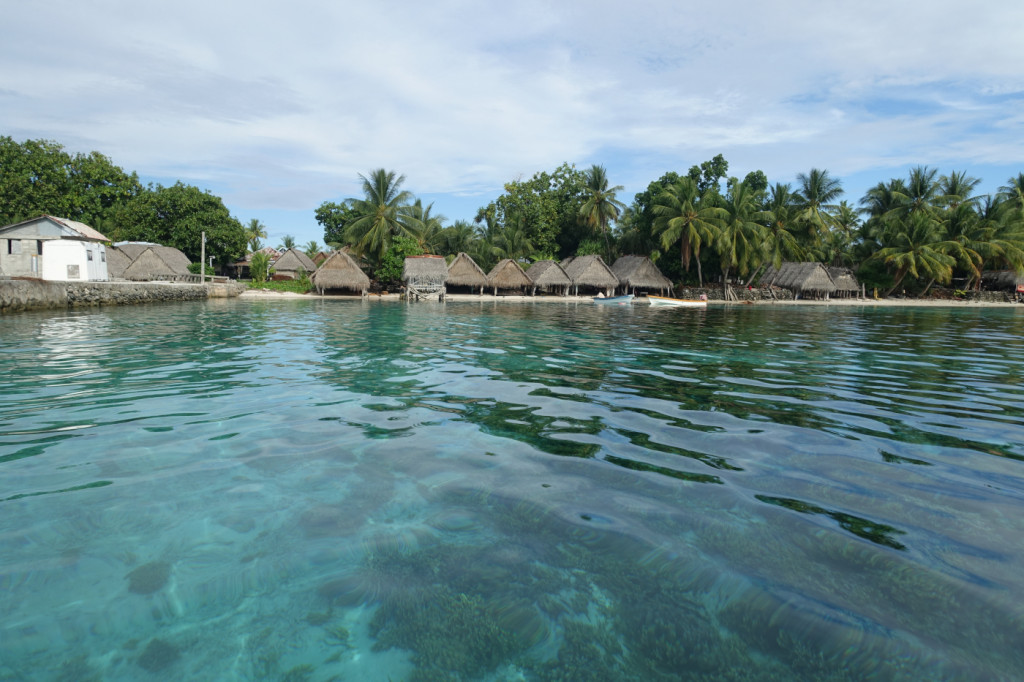
Chief Solomon

The visiting doc at the medical station
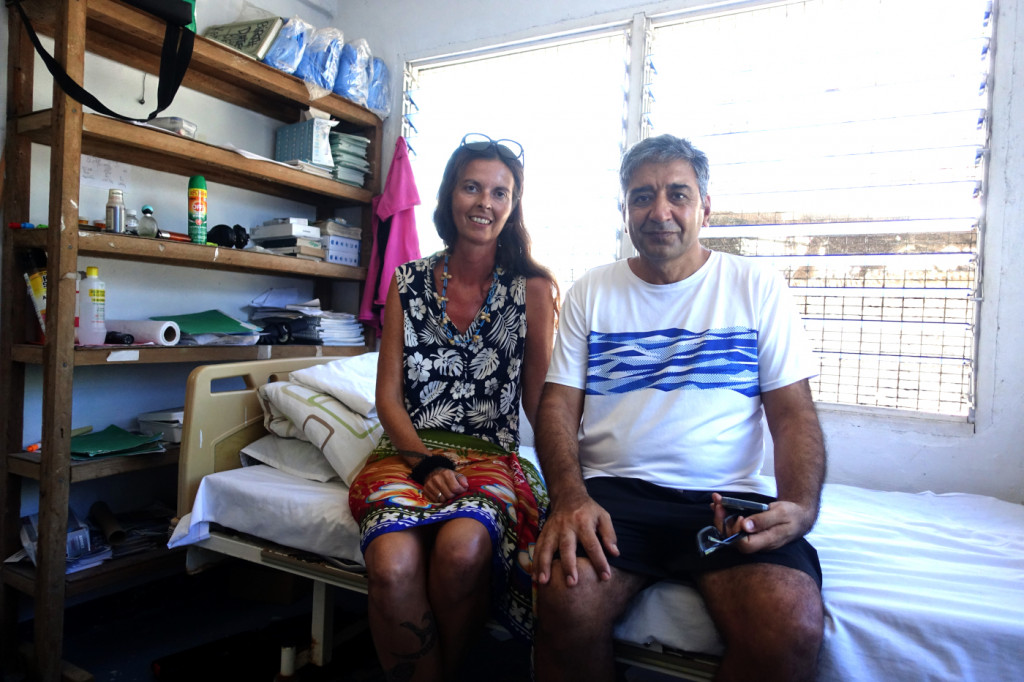
Well developed infrastructure
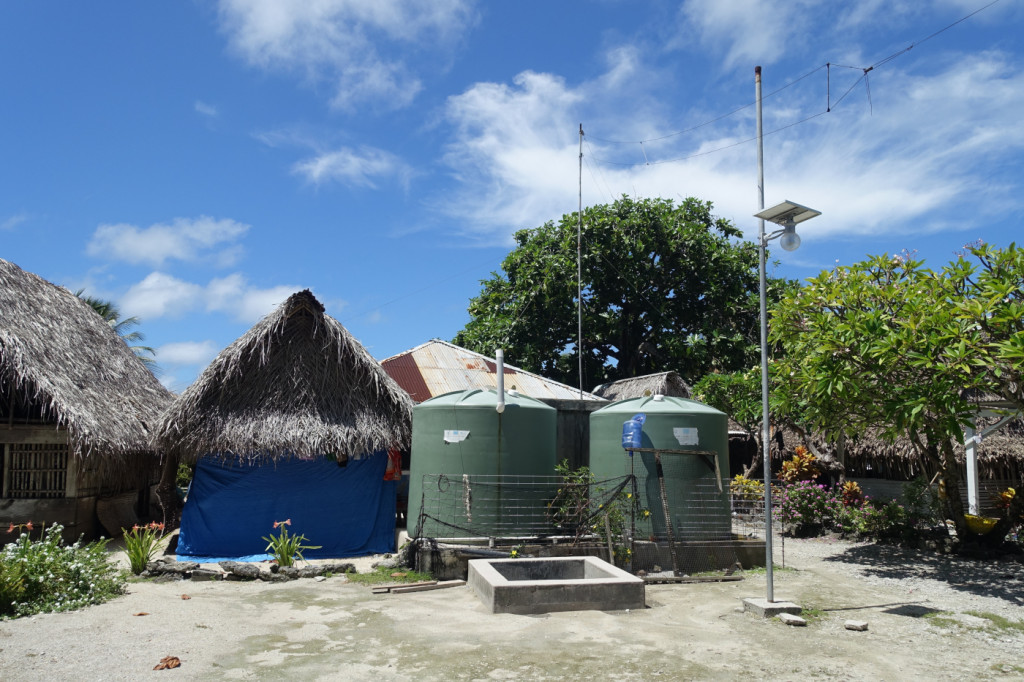
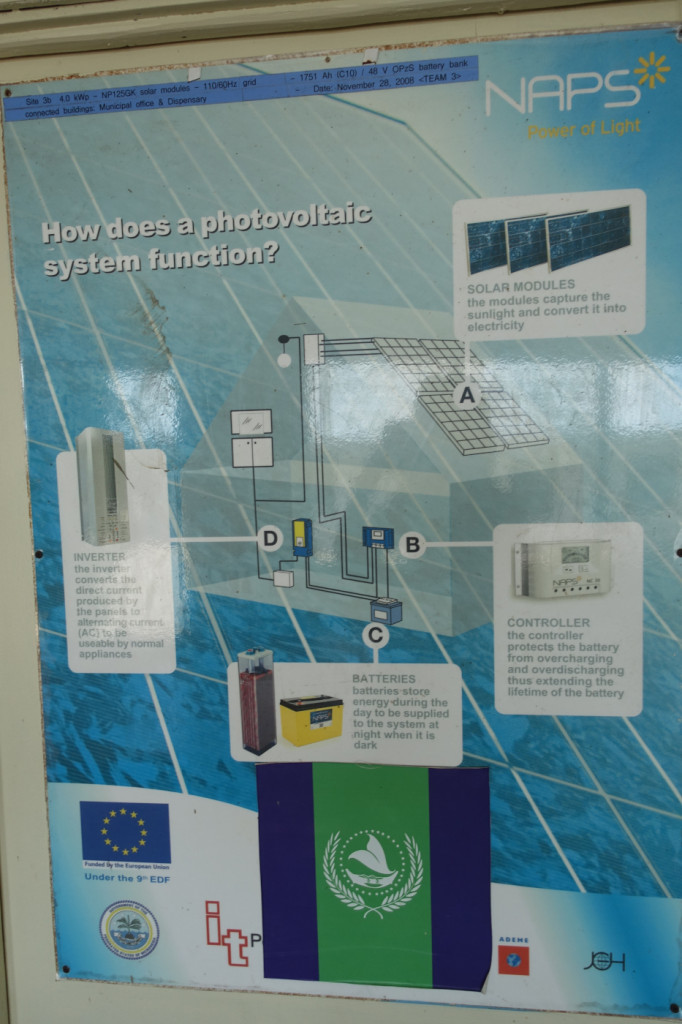
Women drying breadfrui poi to make it last
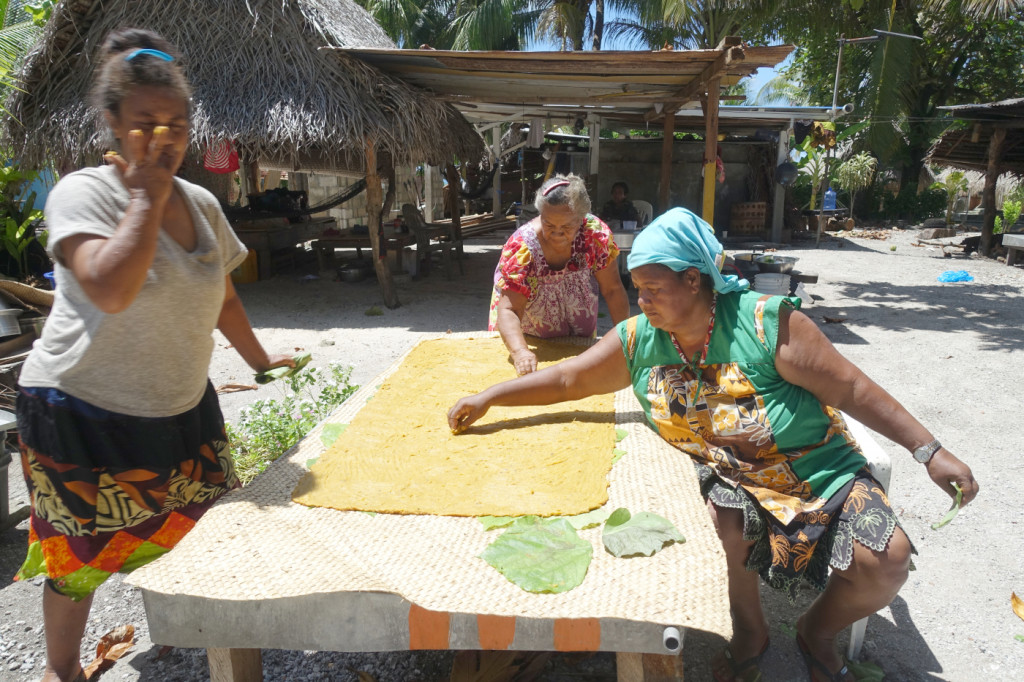
Taro fields
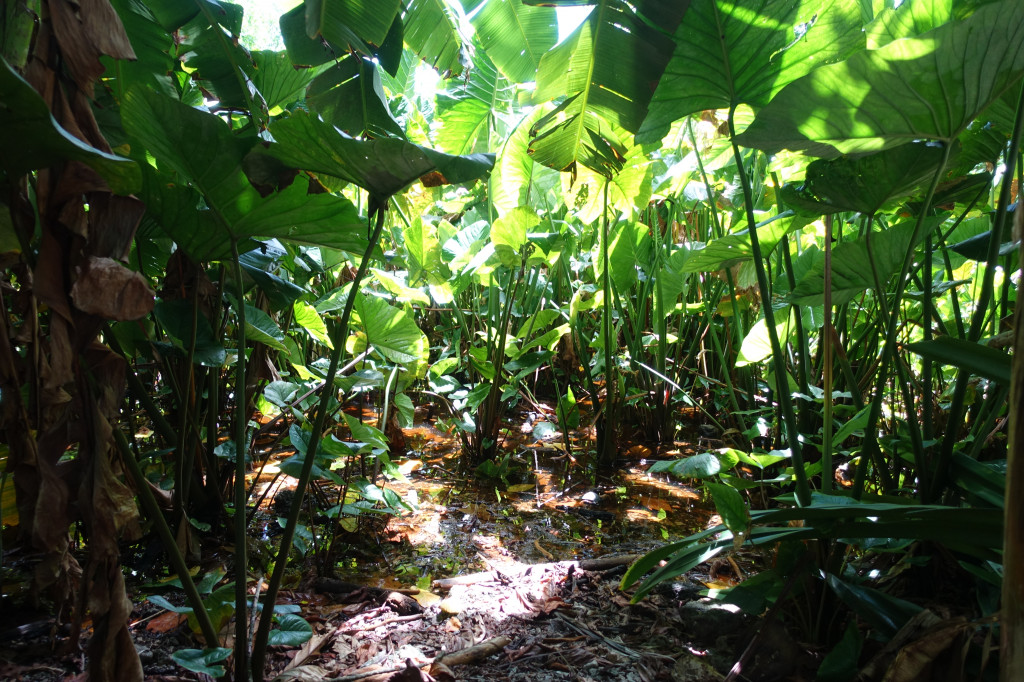
Woven mats are used as walls, but also rugs to sit and sleep on
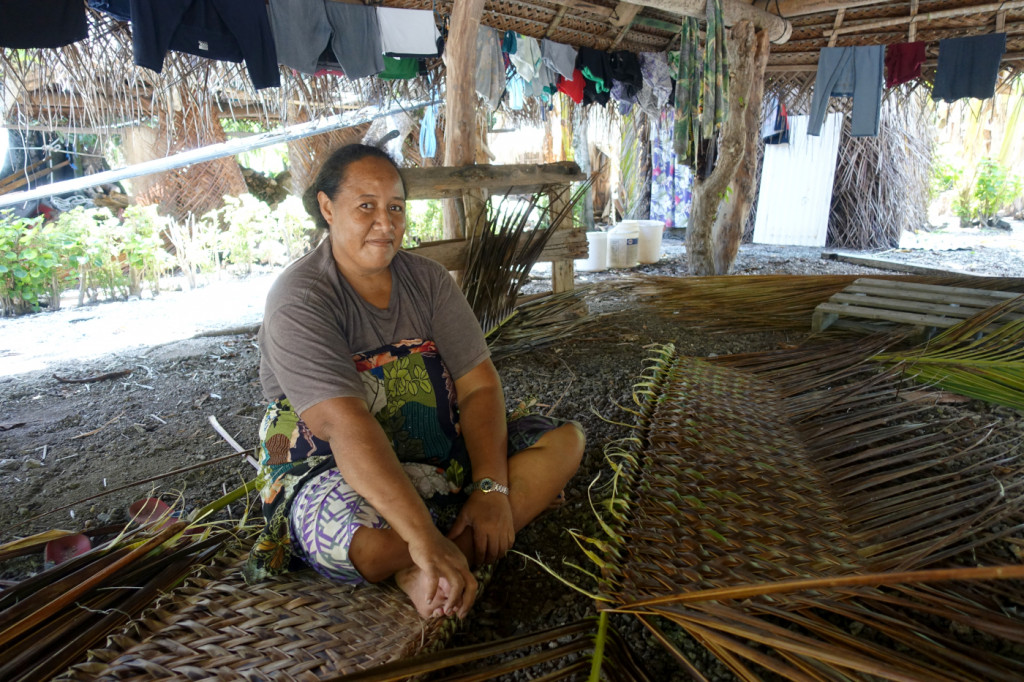
The free WiFi draws villagers of all ages like a magnet ![]()

2025
14
Nov
Water in the bilge
It’s never great when the water alarm in the bilge goes off with a high-pitched BEEEEP, but it’s especially disconcerting when you’re out on the ocean with still 60 nm to go to land… The first step is to lift the floorboard, take out the alarm and silence the deafening noise to be able to think again. The next step is nasty: put a finger into the sloshing brew and taste it–fuck, saltwater!
That’s when simple unease turns into dread.
Fortunately a hasty search for the dripping culprit revealed it was just the watermaker, so we turned it off, got out our cherished Stanley (the wet/dry vacuum cleaner) and Christian quickly got the bilge dry, while I was comforting Smurfy in the aft cabin–Smurfy is terrified of noisy Stanley. And all that on a pitching, rolling boat in light winds and confused seas.
Once we were at anchor, Christian dismounted the feed pump (with the helping paws of Smurfy), changed the pump head and the watermaker’s running again without any leaks!
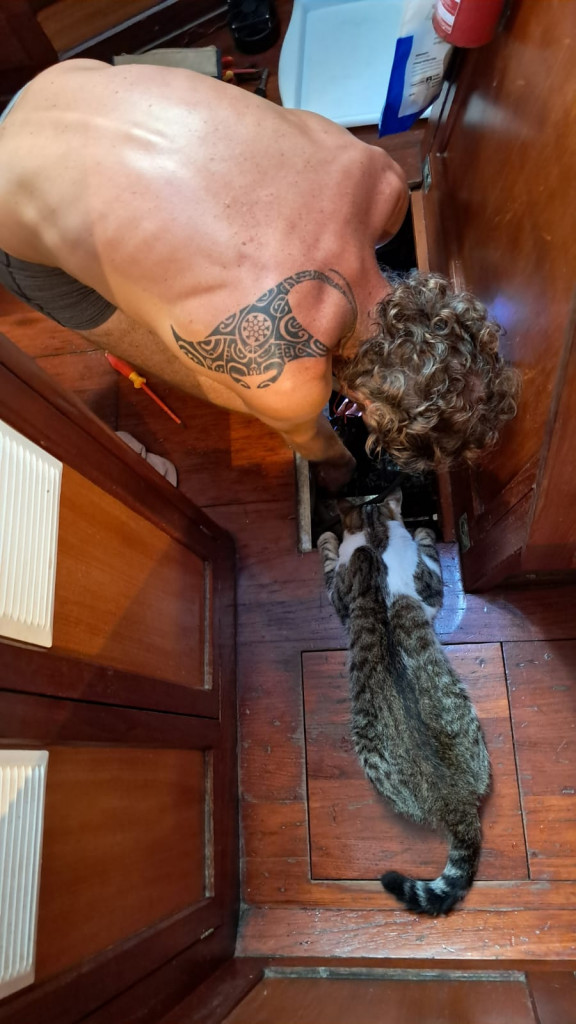

2025
09
Nov
Crossing the equator!
12 years and 8 months ago we crossed the equator as we were approaching Galapagos and since then we’ve spent all these years exploring the many, beautiful islands of the South Pacific. Today we’re crossing the equator again going north on the way to Micronesia!
It’s been a tricky passage so far: we got NE winds instead of the promised SE, plenty of squalls and to make things even more interesting, 2 knots of west-setting current, so we’re crabbing along slooowly.
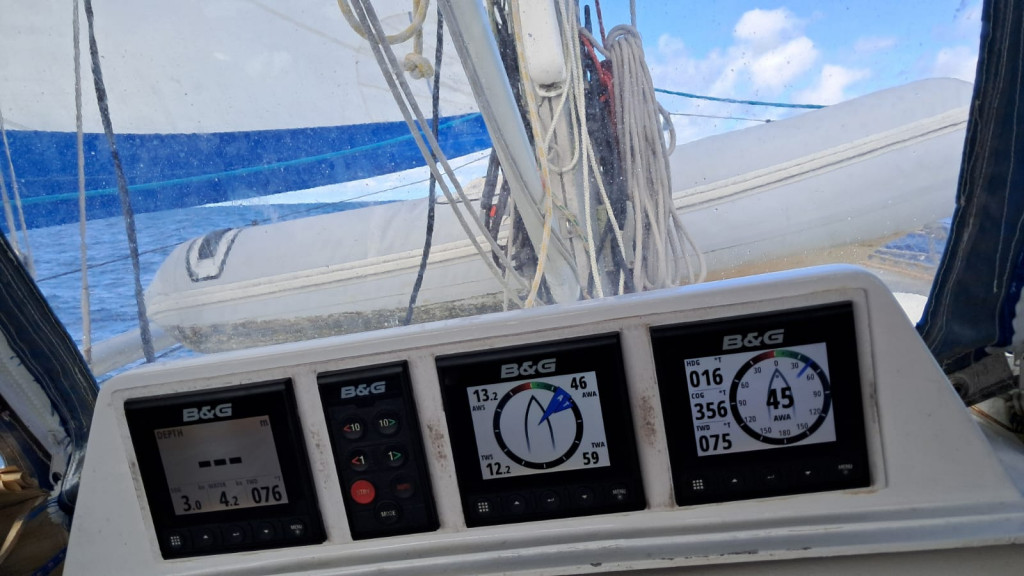
2025
23
Oct
2025
17
Oct
Smurfy aka Pukpuk monster aka Komodo dragon monster
Remember how we were hoping that Smurfy would be less aggressive with less testosterone in his system? Well, it seemed to work for a while, but then we started noticing that he’s been gaining weight since he was neutered, so we’re feeding him smaller portions. Guess what happens when he’s hungry and cranky? Yep, he gets aggressive…
This morning he was sitting next to his empty food bowl about an hour after he’d had breakfast when I was walking past. He jumped at me, sank his canines into my leg and ran off to hide before I could grab him… We call this kind of ambush “sneaky smurfy snake bite”. Worried about infection from sea water I put hydrocolloid plasters on the bites to seal them off, but then of course there remains the risk of infection from within–cats aren’t exactly famous for the dental hygiene. I suppose they could hunt the way Komodo dragons do, just give their prey a small bite and then leisurely wander after them until they topple over from the infection…
So maybe we should call him Smurfy dragon monster instead of Smurfy pukpuk monster. Pukpuk means saltwater crocodile in the Tok Pisin of Papua New Guinea ![]()
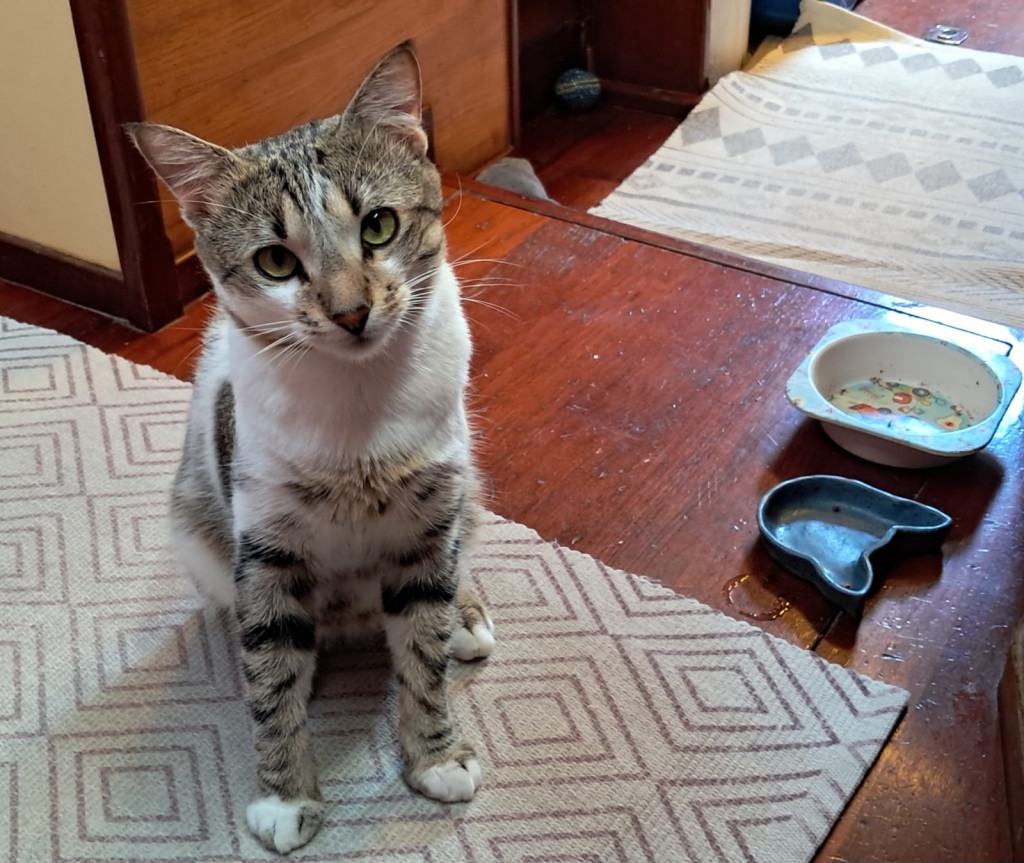
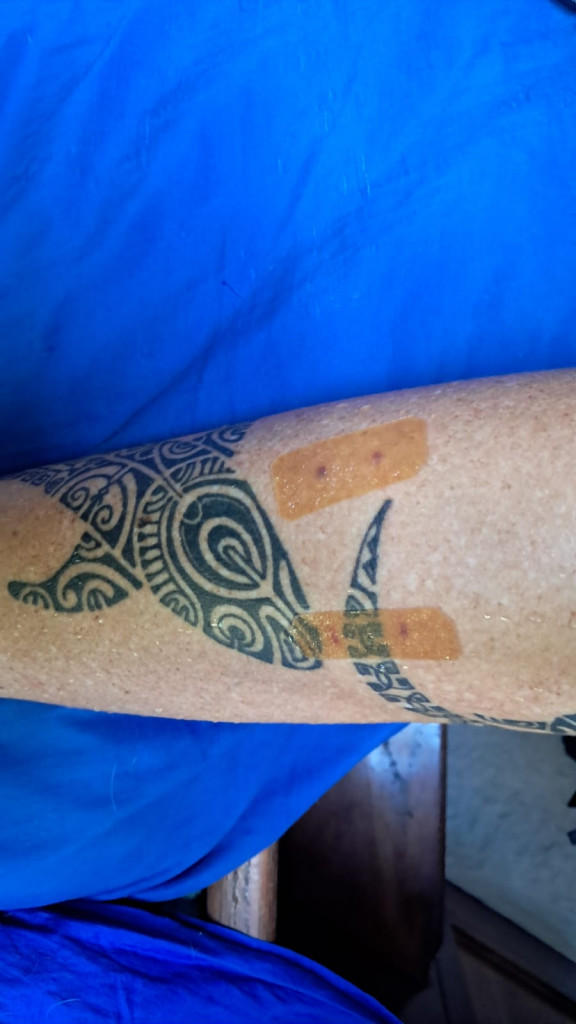
2025
04
Oct
Photos of Buka, Bougainville

Buka, Bougainville, September 2025 (Papua New Guinea)
We visited Buka despite travel warnings and felt really welcome in a safe, clean and friendly town! Pics of our 2 weeks here: the bustling channel and town, the "posh" island Sohano and a road trip we did with our friends.
(34 photos)
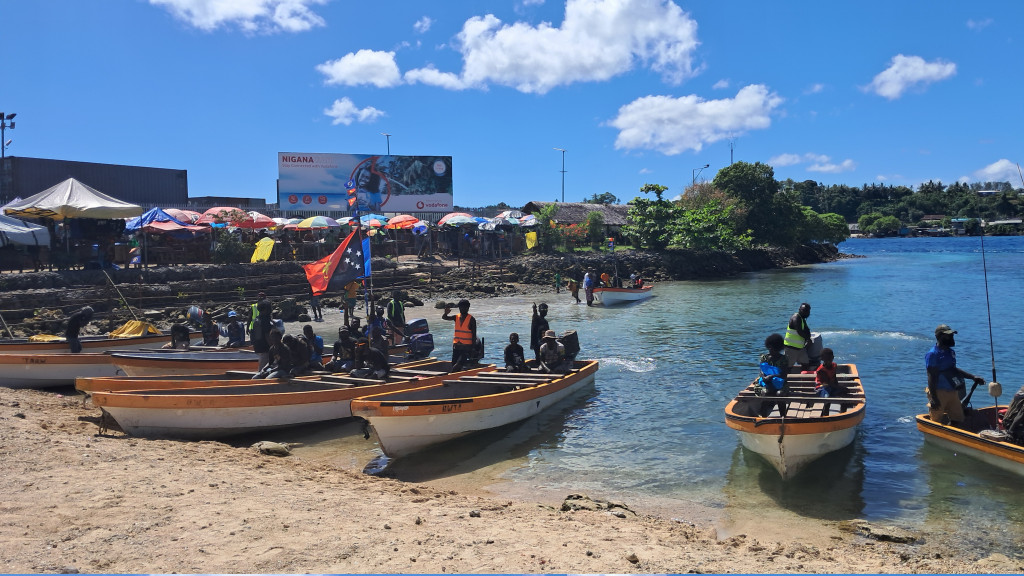
2025
26
Sep
Smartphones in Papua New Guinea
It seems like such a culture clash when locals in handmade canoes show up, smartphone in hand to take pictures of our boat. People who live in huts made of woven pandanus, coconut or bamboo with just a single solar light and charger still invest the little money they have into a smartphone… PNG never established a network of landline connections, instead they started putting up towers for cell phones once this technology was available, so having a mobile phone was vital to be connected to the outer world. People here love Facebook and video calls, so they want to have a smart phone ![]()
Very remote communities sometimes don’t have a cell tower, but just a WiFi hotspot–in these cases the people really need a smartphone in order to do their calls via WhatsApp or FB messenger. In places where this hotspot is broken (or never got finished), people race out when they see a sailboat, hoping that they have Starlink aboard: on a remote atoll we had half the village aboard reconnecting with family after many months without any means of communication!


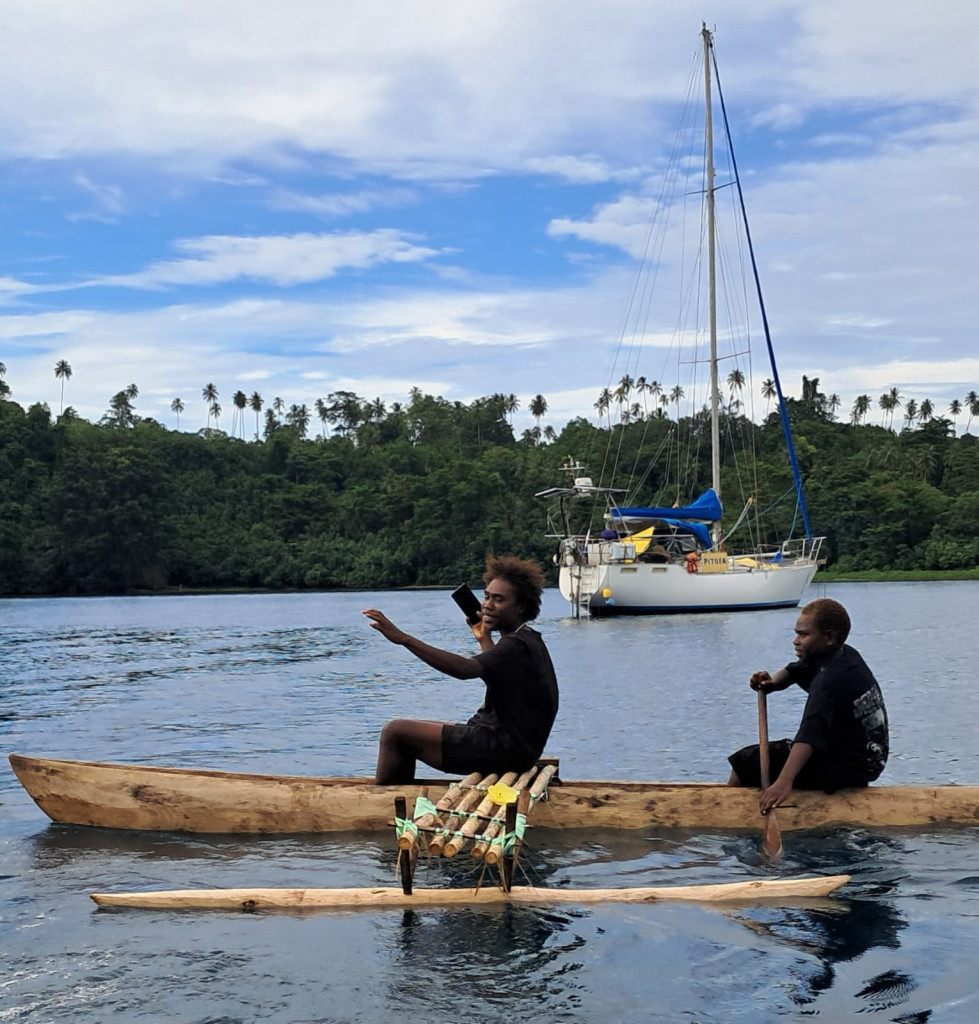
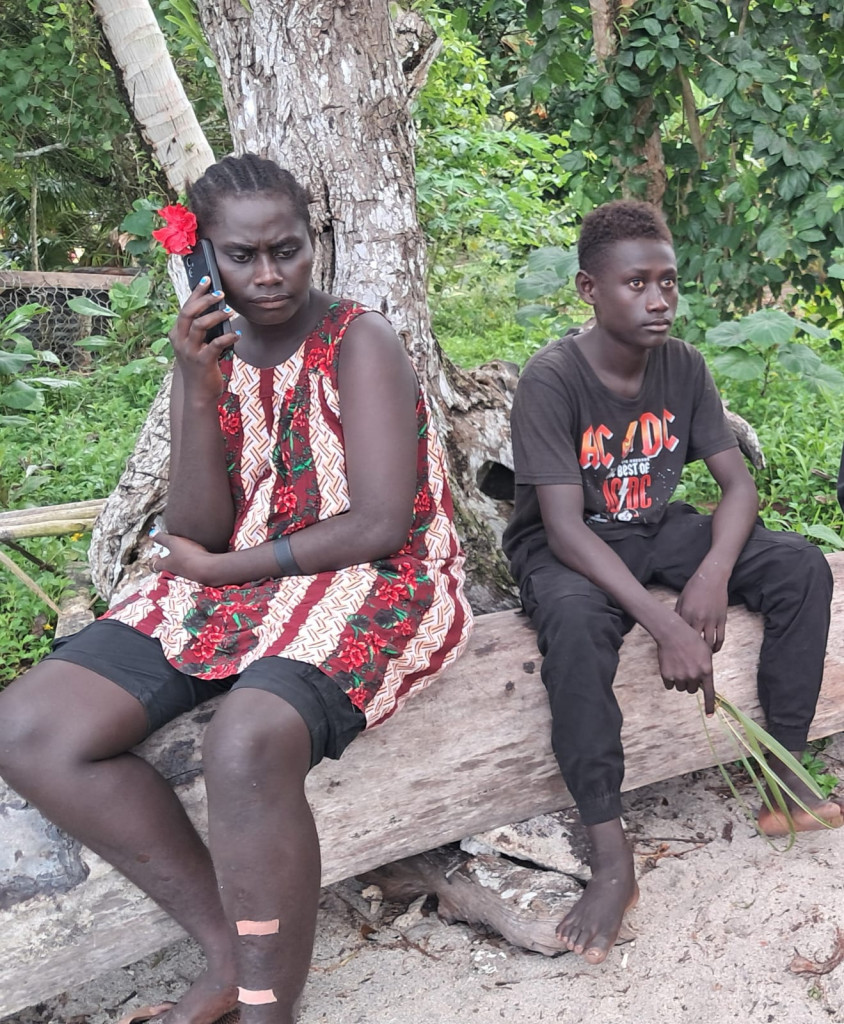
2025
25
Sep
Feeling like celebrities in Bougainville
We’ve never felt so popular before… Many people here have never seen a sailboat before and the normal reaction once we drop anchor is for half the village to rush out by boat or canoe to have a chat and take pictures of us. Yes, here the locals takes photos of the tourists, not the other way round ![]() Of course they are eager to trade, so we have more fruit and veg aboard than we can eat…
Of course they are eager to trade, so we have more fruit and veg aboard than we can eat…

Everyone wants to come up to see the boat
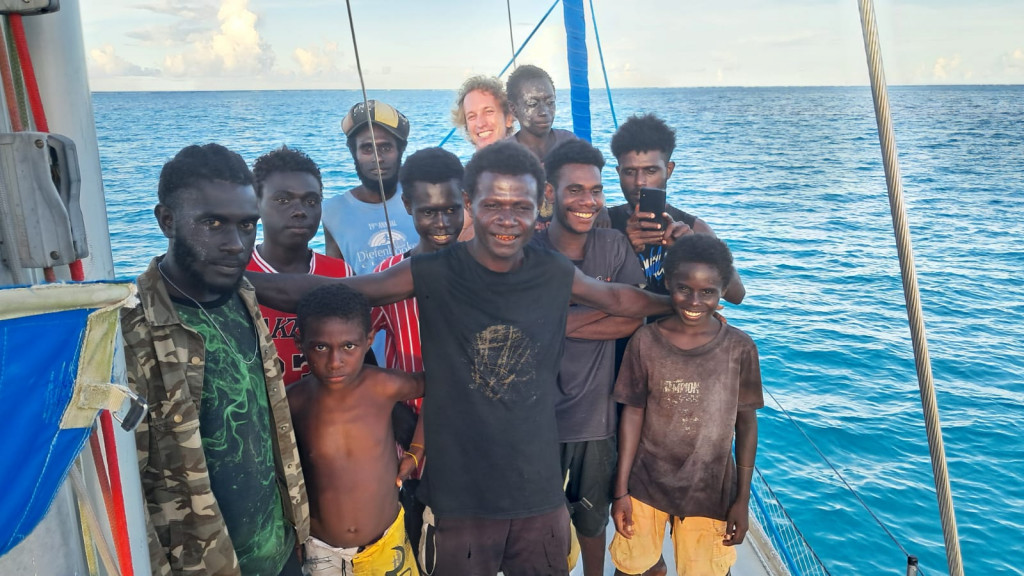
And everyone wants to take pics and pose with us for more pics ![]()
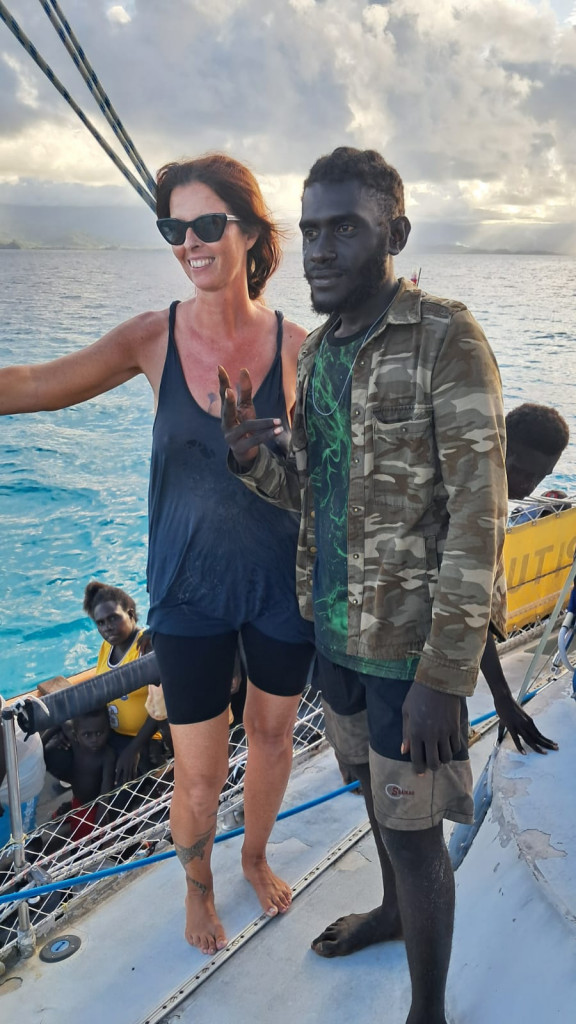
Hoisting the flag of Bougainville

Of course we’re welcome to visit the villages in return!

2025
21
Sep
19 kg tuna and no freezer!
This 19 kg yellow-fin tuna was the heaviest fish we ever caught. We use a simple handline for fishing and Christian pulled the big guy in within 5 minutes (no endless fighting and torturing like people with professional fishing gear seem to enjoy). Christian usually just grabs the swivel of the metal leader to hoist fish up to Pitufa’s high stern, but in this case we strapped a gaff hook to the rear end of our boat hook, otherwise we wouldn’t have been able to get him up… Fortunately tuna aren’t big fighters, so it was fairly easy to kill the big fish and let it bleed out.
Smurfy was watching us all the time, inspected the monster-fishy with fascination and was of course the first to get a piece–the only way to get his paws out of the bloody mess and continue cleaning and chopping up the fish.
Whenever we catch a bigger fish, Christian chops thick pieces (about 8 cm, just as long as the ceramic knife I use) still on the aft deck and I then take over in the galley, cutting off skin, bones and bloody bits. In this case it took me about 3 hours: I filled 12 jars to be processed in the pressure cooker and that still left us with 3 plastic boxes (2 kg each) full of sashimi-quality meat to finish between the three of us (Smurfy manages almost the same amount as we do) over the next 8 days (that’s as long as we trust fish in the fridge). About 2 kilos of red, bloody meat went to the stray cats of Taro ![]()
When I tell people that we eat fish for lunch and dinner for over a week, I usually don’t get the excited reaction I expect, but a mixture of pity and disgust. Maybe they think we just keep munching an endless repetition of burgers and fish and chips?!
So here’s the menu Christian and I had for our tuna festival. Smurfy thinks cooking ruins fish, so he got sashimi three times a day instead ![]()
1 dinner: seared tuna with wasabi mayonnaise and crackers
2 lunch: carpaccio (with capers, ginger, spring onions)
2 dinner: seared tuna steaks in a creamy carrot and spring onion sauce with rice
3 lunch: tuna burgers
3 dinner: sashimi with rice
4 lunch: spicy ceviche (raw fish with lemon juice and chilis, we added papaya, cucumber, spring onions and spinach greens)
4 dinner: hot Indian tandoori tuna and eggplant in roti flat-bread
5 lunch: tuna salad with cocktail-sauce
5 dinner: poisson cru with rice (French Poly national dish raw fish in coconut, we do a spicier version with ginger, chilis and veg)
6 lunch: tuna sandwiches
6 dinner: Thai curry with rice noodles
7 lunch: tuna dip with tacos
7 dinner: Japanese-style teriyaki tuna steaks with rice
8 lunch: tuna wraps
8 dinner: Indian tuna curry (palau masala) with spicy sweet potatoes + banana chutney
2025
11
Sep
Good-bye Solomons

Solomon Islands
A few impressions of our 6 months in the Solomons between March and September 2025: friendly people, traditional villages, daysails between the islands, successful fishing, tricky anchorages and lots of time in the water as it was HOT.
(36 photos)
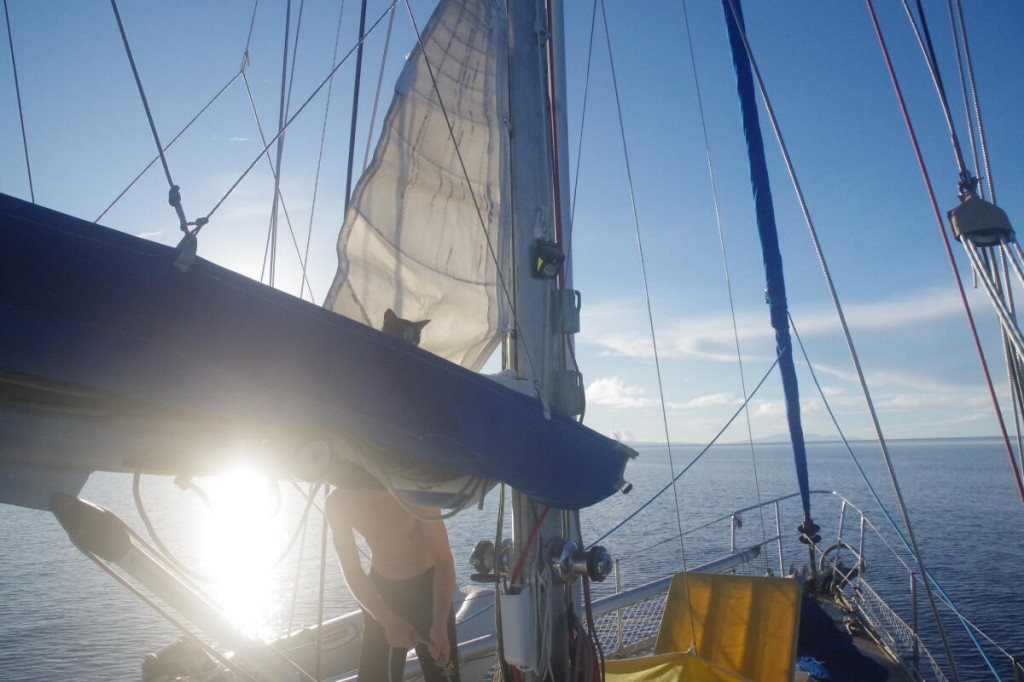
2025
11
Sep
Cruising info Solomons
We’re back in Taro, where we checked in half a year ago, not quite knowing what to expect and concerned about crocodiles, malaria, crime and anchorage fees. We needn’t have worried, all went well, even though we often found it difficult to find a safe anchorage between very deep bays and reef shelves that come up to the surface almost vertically. We love heat and humidity, but the Solomons were a bit too hot even for our taste ![]()
6 months, 15 islands, countless islets and 50 anchorages later we’d like to share our experiences with you:
Crocodiles and snorkeling: We never saw a saltwater crocodile (and hope it stays that way), but locals assured us almost everywhere that there were PLENTY around and advised to stay out of the water near mangroves and especially between dusk and dawn. We stayed away from the big islands, only went snorkeling on reefs far away from mangroves and spent plenty of time in the water. We saw lots of sadly overfished and/or bleached reefs and a few real gems with pristine coral in protected areas (e.g. Simon’s Nature Reserve and Papatura Resort).
Malaria: We didn’t take prophylaxis, but tried to be careful. We sprayed ourselves when going ashore during dusk or later, tried to anchor far out and had mosquito nets on all hatches and the companionway. We bought rapid tests and stand-by medication, have used the tests several times, but so far they were always negative (touch wood).
Crime: We didn’t have any negative experiences with the friendly locals, on the contrary, we experienced nothing but hospitality and generosity. We were cautious anyway, didn’t leave snorkel gear and other temptations on deck and locked the boat whenever we went out snorkeling or ashore. Even Honiara felt very safe with friendly vibes and no incidents.
Fees: We had heard a lot about anchorage fees, but we were only approached with demands half a dozen times. Our reaction was always the same, polite but firm. We explained that we love to tell stories and trade for veg/fruit and that we are happy to pay for goods/services or help out with repairs. But we are not willing to pay simply for being in a place. If that didn’t help we added that cruisers are nowadays connected on social media and if one warns the others about an unfriendly reception, boats will stay away. That did the trick ![]()
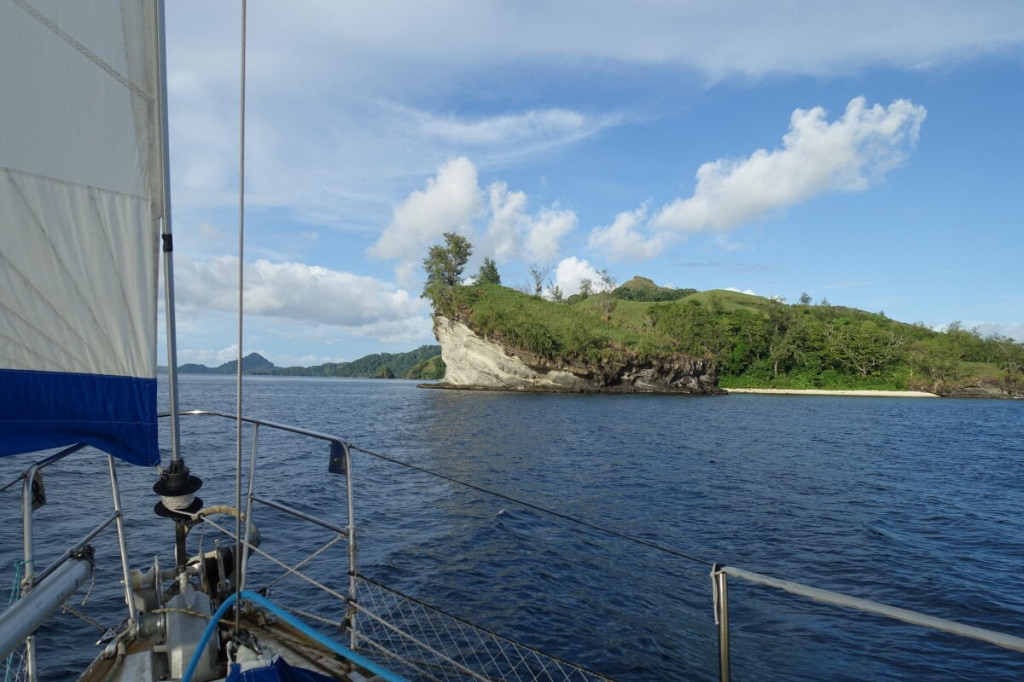
2025
06
Sep
Photos of Papatura, Santa Isabel, Solomons

Papatura Island
Yachties are welcome to anchor off Papatura Island Resort with its friendly atmosphere and great food! We enjoyed the pristine reefs and beautiful hiking trails.
(29 photos)
2025
05
Sep
Papatura Island
We met Kym (“Dive Guadalcanal”) when she volunteered to install the mooring for Simon’s Nature Reserve. Back then she invited us to visit her at Papatura (a private island at the northern end of Santa Isabel), where she and her parents run a resort. Sailboats are welcome to anchor in front of the resort, but make sure to ask for a good spot, before you drop the hook so you don’t end up anchoring in coral! The anchorage is free, but yachties are expected to pay 100 SBD per person custom fee to the chief (for the whole duration of their visit) or they can make some other contribution for the village (which is actually located on the main land).
The resort is small, with only a handful of beautiful bungalows in traditional style. When we got there, they were doing some maintenance, so we were the only guests and got to hang out with Kym and her daughter and cousin, who were visiting at the time.
We took some time off from jobs and boat chores and played tourists, doing long walks on the trails that criss-cross the lush forest, going for sundowners and dinner ashore. After the algae-overgrown reefs further south along Isabel we were pleasantly surprised when we jumped into the water: pristine reefs with wonderful biodiversity, plenty of fish and the biggest fans we’ve ever seen!
We ended up spending much more time than planned as it’s hard to leave such a pretty spot with so much to do and a calm, comfy anchorage. Before we left we stocked up on fresh veg and fruit from the village ladies who come to the resort almost daily. Thanks a lot, Kym, for your hospitality, we had a great time ![]()
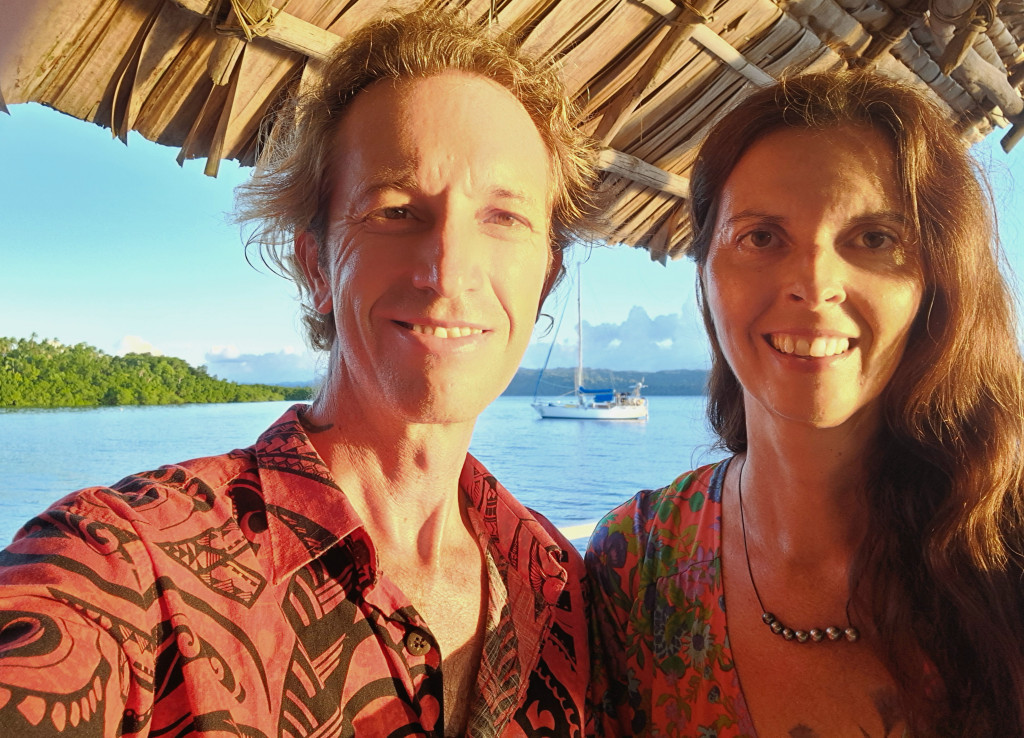
2025
03
Sep
Sailing up the coast of Santa Isabel
We hopped up the coast of Santa Isabel in daysails between 20 and 50 nautical miles. The island has a deeply submerged outer reef far off the coast and plenty of little reefs within that area. There aren’t any detailed charts for the area here and to find decent satellite images we are usually switching between different providers (Google, Bing and ArcGis) and even then there are patches of coast where one set of sat images is cloudy, the other one doesn’t have high resolution and the third shows no pics at all. We always kept a look-out and still had some slightly exciting moments when the depth sounder was counting up from 100 to 10 metres with the water showing the same dark colour and no obvious path through invisible shallows while rushing downwind with 7 knots in 20 knots of wind, the genoa already reefed to the size of a towel and NO BREAKS on Pitufa ![]()
As always we tried to stay away from the mainland with its mangrove bays and crocodiles and tried to find anchorages out on islets offshore where the water is clear enough to go for a snorkel and we found some pretty spots!
The coast of Santa Isabel is mostly uninhabited, only scattered tiny villages dot the shore and the mountains and hills look pristine from afar. Nevertheless the sat images shows a maze of roads up into the forest–looks like the islanders have sold out their land to the mainly Malaysian logging companies…
The overflow of nutrients caused by erosion on the bare land (of course the companies don’t reforest) may well be the reason why many of the coral reefs here are overgrown by algae despite the lack of pollution (with only small, scattered settlements around).




